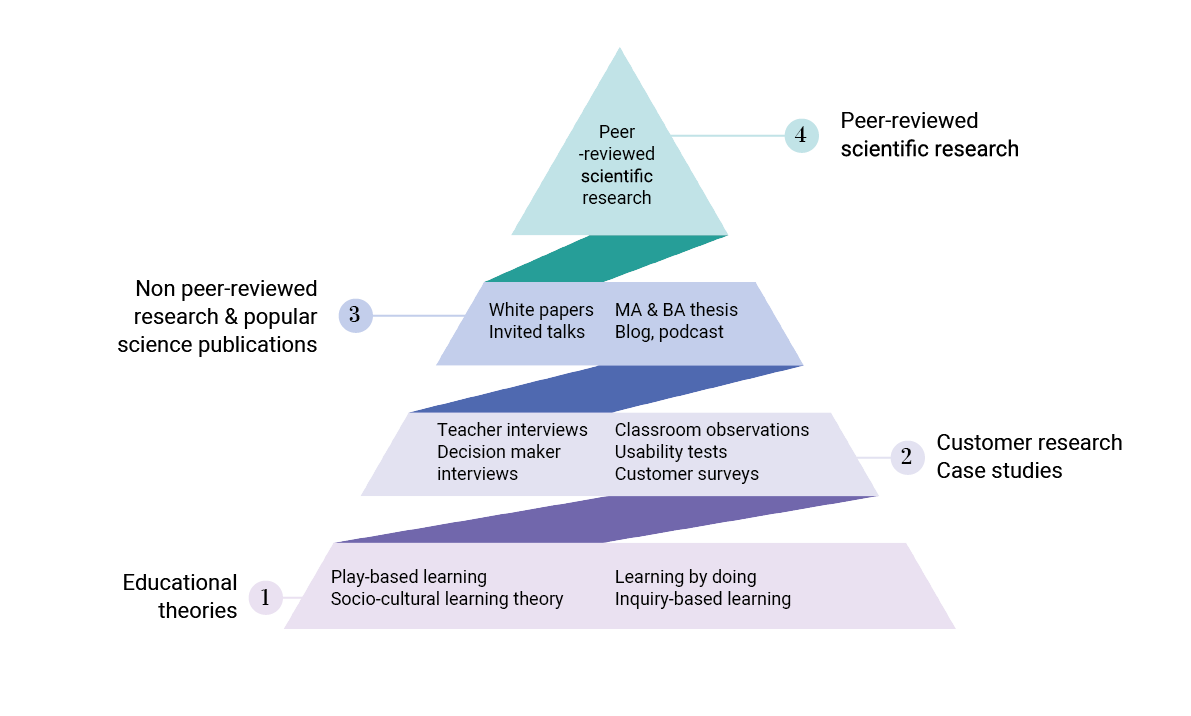At Kide Science we take a comprehensive approach to measuring our impact on young children; considering their learning, well-being, and development through play.
We have written a white paper outlining our four-level framework for assessing impact evidence.
The Impact Evidence Pyramid
At Kide Science we use a pyramid structure to show the different levels of impact evidence.
- At the foundation (Level 1) are established learning theories like play-based and inquiry-based learning.
- Building on this base, Kide Science conducts research (Levels 2 & 3) to improve the program, including teacher feedback (surveys, interviews) and evidence highlighting the importance of play in early learning (presentations, blogposts, podcasts).
- Finally, the strongest evidence, peer-reviewed scientific research, sits at the top (Level 4). This research demonstrates the Playful Inquiry model's effectiveness in supporting children's science skills and teacher confidence.
Kide Science's global reach further emphasizes its impact, with a presence in 32 countries, over 30,000 educators using the program, and reaching over 1 million children.
In this white paper, Kide Science showcases its effectiveness in supporting early STEM education through a multi-layered approach. The different levels of impact evidence (research, user feedback, and global reach) all point to the efficiency of the Playful Inquiry model. The playful approach benefits teachers by reducing anxiety and creating a fun and flexible learning environment. The story-based approach keeps students engaged and fosters curiosity through open-ended problem-solving, making learning enjoyable and accessible for all.
You can read the full white paper here.

